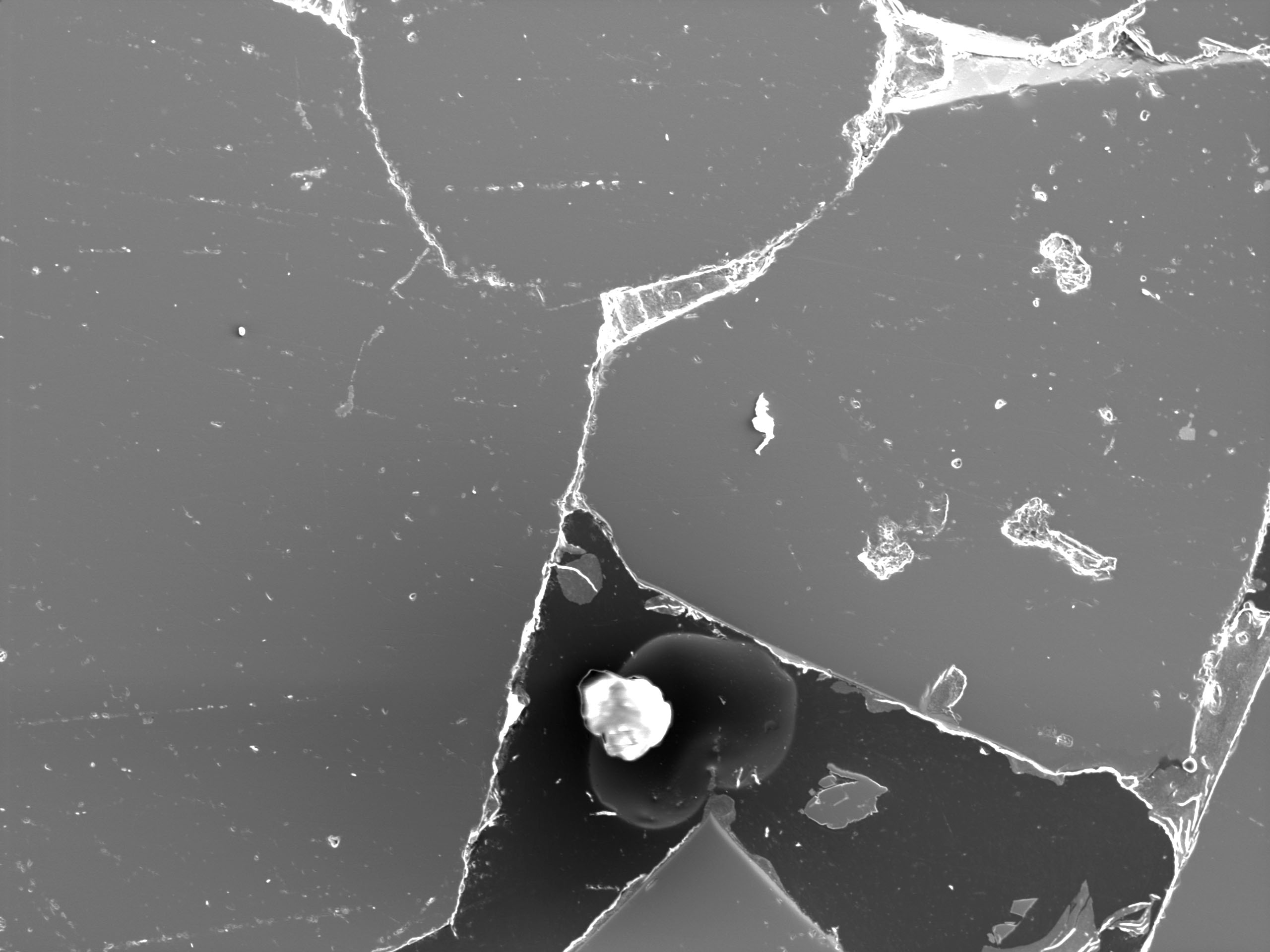
This sandstone originated as a sheet of sand in clear, shallow water near the shore of a Paleozoic sea and consists of fine-to-medium-size, well-rounded quartz grains with frosted surfaces. Quartz is rather "boring" seen in an SEM as secondary electron images (SEI) or backscattered electron images (BSE), but is very photogenic when imaged with cathodoluminescence (CL). The electron beam of the SEM excites the weakly bound outer shell electrons, which produce different colored light, depending upon trace elements present in the quartz. As the sand grains came from many different sources, we see a variety of colors.
SE Image
BSE Image
CL image. Notice that now you can discern the "overgrowths" of quartz cementing the grains, which are "invisible" in the SE and BSE images